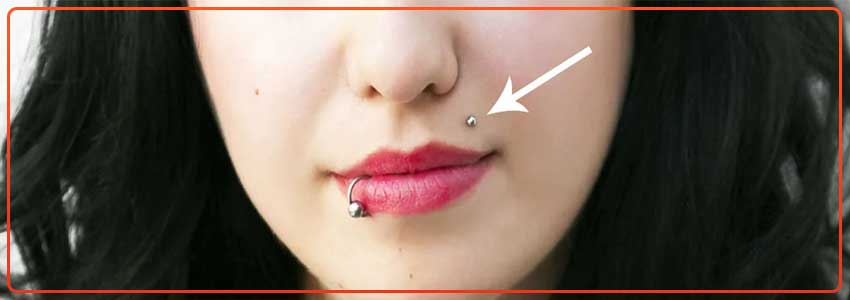Medusa piercings, also known as philtrum piercings, are a unique and beautiful way to express yourself. However, like any piercing, proper aftercare is essential to ensure that it heals correctly and avoids any complications. In this article, we’ll discuss common problems that can occur with a Medusa piercing, such as infection, swelling, discoloration, bleeding, scarring, rejection, and migration.
We’ll also provide tips and solutions for how to address these issues and keep your piercing looking great. So whether you’re considering getting a Medusa piercing or already have one, keep reading to learn about proper aftercare and how to solve common problems.
Medusa Piercing Aftercare: General Tips
Like any piercing, proper aftercare is essential for the healing process. Here are some general tips to follow for Medusa piercing aftercare:
- Wash your hands thoroughly before touching the piercing.
- Use a mild, fragrance-free soap to clean the piercing twice a day.
- Use a sea salt solution to rinse your piercing after eating or drinking anything other than water.
- Avoid smoking, drinking alcohol, or kissing for the first few days after getting your Medusa piercing.
- Avoid swimming or submerging your face in the water for at least two weeks.
- Avoid touching the piercing with dirty hands or sharing utensils or drinks with others.
Common Problems with Medusa Piercings
Despite following proper aftercare, you may still encounter some problems during the healing process. Here are some of the most common problems associated with Medusa piercings:
1) Infection
Infections can occur if the piercing is not kept clean and dry. Symptoms of an infection include redness, swelling, pain, and discharge.
2) Swelling
Swelling is a common side effect of any piercing, but it can be especially noticeable with a Medusa piercing due to its location. Swelling usually peaks within the first few days after getting the piercing.
3) Discoloration
Discoloration around the piercing can be a sign of bruising or irritation. It can also be a sign of an allergic reaction to the jewelry.
4) Bleeding
Bleeding can occur during or after the piercing process. It is normal to experience some bleeding, but if it persists or is excessive, you should seek medical attention.
5) Scarring
Scarring can occur if the piercing is not properly cared for or if you have a history of keloid scarring.
6) Rejection
Rejection occurs when the body begins to push the piercing out. This is more common with piercings done with a larger gauge or if the piercing is placed too shallowly.
7) Migration
Migration occurs when the piercing moves from its original location. This can be caused by improper jewelry or improper aftercare.
How to Solve Medusa Piercing Problems
If you’re experiencing any problems with your Medusa piercing, there are steps you can take to address them. Here are some solutions to common problems:
1) Infection: Clean and Disinfect Regularly
If you suspect an infection, it’s important to clean the piercing regularly and disinfect it. You can use a saline solution to rinse the piercing or make your own by mixing 1/4 teaspoon of sea salt with 8 ounces of warm water. If the infection persists, you should seek medical attention.
2) Swelling: Use Ice and Salt Water Rinses
To reduce swelling, you can apply ice to the area or rinse your mouth with a saltwater solution. Avoid using aspirin or ibuprofen, as they can increase bleeding.
3) Discoloration: Consult Your Piercer
If you notice discoloration, consult your piercer to make sure you’re not having an allergic reaction to the jewelry. They may recommend switching to a different type of jewelry or material.
4) Bleeding: Apply Pressure and Keep Clean
If you experience bleeding, apply pressure to the area with a clean cloth or gauze. Keep the area clean and avoid touching it with dirty hands.
5) Scarring: Follow Aftercare Instructions Carefully
To prevent scarring, it’s important to follow aftercare instructions carefully. Avoid touching the piercing with dirty hands, and avoid swimming or submerging your face in water until the piercing is fully healed.
6) Rejection: Remove the Jewelry and Let Heal
If you experience rejection, remove the jewelry and let the piercing heal. You can try getting the piercing done again in the future with a smaller gauge or in a different location.
7) Migration: Consult Your Piercer
If you notice migration, consult your piercer to make sure the jewelry is properly placed and to adjust it if necessary. Follow aftercare instructions carefully to prevent further migration.
Conclusion
Medusa piercings are a unique and beautiful addition to your body art, but they require proper aftercare to ensure they heal correctly and avoid any potential problems. By following aftercare instructions carefully and addressing any problems that arise, you can enjoy your Medusa piercing for years to come.



